Of all the boats I’ve built and cruised with, my sneakbox LUNA is the one that has meant the most to me from gathering the materials to build her to having her see me safely through my most challenging voyage. All the planking for her cold-molded deck and hull came from a large western red cedar driftwood log I towed by kayak to my home beach and split by hand with a maul and wedges. I constructed the sneakbox in a cabin/shop I’d built deep in the foothills of Washington’s Cascade Mountains where my electricity came from alkaline batteries and the running water was the South Fork of the Sauk River, a lazy stone’s throw from the front door. When her hull had enough of a finish to be weatherproof, I hauled her on a sled towed by a snowmobile 14 miles to the roadhead and moved to another utility-free cabin on Lopez Island.
LUNA was meant for a winter cruise from Pittsburgh, Pennsylvania, to Cedar Key, Florida, by way of the Ohio River, the Lower Mississippi River, and the Intracoastal Waterway skirting the Gulf of Mexico. For two-and-a-half months in the winter of 1985, she carried me 2,400 miles through storms, floods, ice, darkness, log jams, and whirlpools.
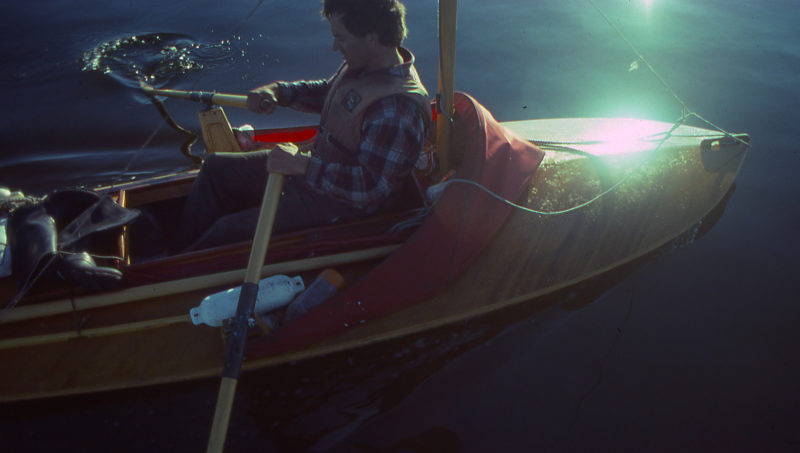
On this morning in 1986, I was rowing about a mile off Florida’s Gulf coast on the last day of 2-1/2 months of rowing and sailing from Pittsburgh. I had my camera strapped to the end of LUNA’s boom.
After that adventure, I moved on to other boatbuilding projects and took LUNA out only a handful of times. I last rowed her nearly 20 years ago; since then she has been in the garage, set on edge, leaning against a windowless wall. I caught a glimpse of her bow poking out from the shadows every time I pulled one of my other boats out of the garage.
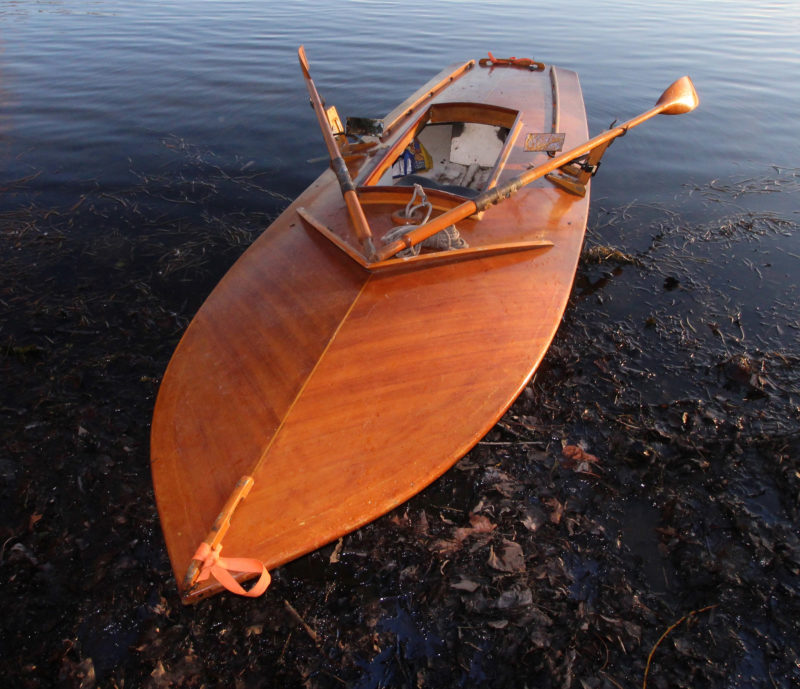
LUNA is in good shape for a 38-year-old boat entirely planked in western red cedar from a single driftwood log.
Drawn by the fond memories of my cruise, I decided I’d try to spend a winter night aboard LUNA. I moved the boats that had hemmed her in for so long, lowered her onto a dolly, and wheeled her into the back yard. After I hosed the dust off, LUNA looked to be in very good shape, none the worse for her decades of idleness.
The hatch had been damaged during the cruise, so I fixed the cracks in its mahogany frame and gave it a fresh coat of varnish. The two bronze bolts that anchored the braces for the folding oarlock stanchions needed to be replaced and then LUNA was as fit as she was when I first built her. There was even some luster left in the only varnish she’d ever had. While the boat sat in the back yard, I tried taking a few naps in the cockpit. With a sleeping pad and a pillow, I was quite comfortable and once even drifted off to sleep.
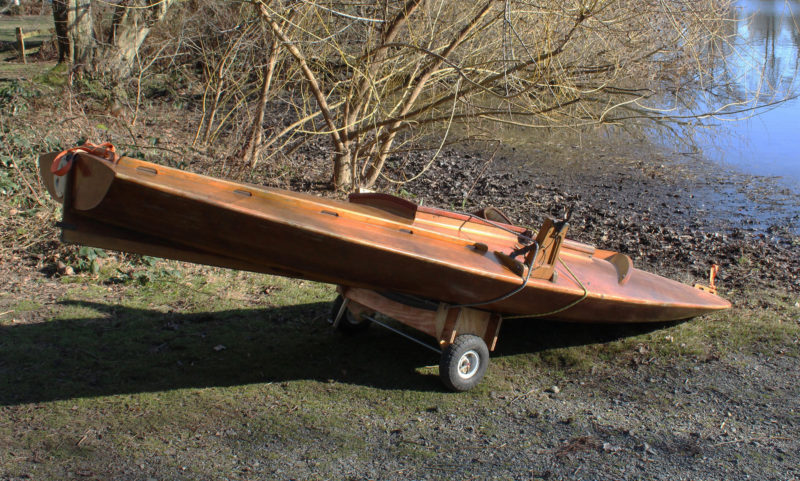
I made the cart for LUNA from old hand-truck wheels and interlocking pieces of 3/4″ plywood. The only part I had to buy was the 36″- length of 5/8″ steel rod for the axle. I didn’t take a cart with me on my 1985-86 cruise because I didn’t have room for it or the need for mobility ashore. I was always at the water’s edge.
For an overnight outing I wouldn’t be filling the boat for a month’s-long cruise, and there would be room to take a few accessories that I once would have considered unnecessary. Thirty-seven years ago, I could lift LUNA’s 135-lb hull to my shoulder and carry her for a short distance, but now I need to be much more cautious about my back, and so I made her a cart of plywood and hand-truck wheels.
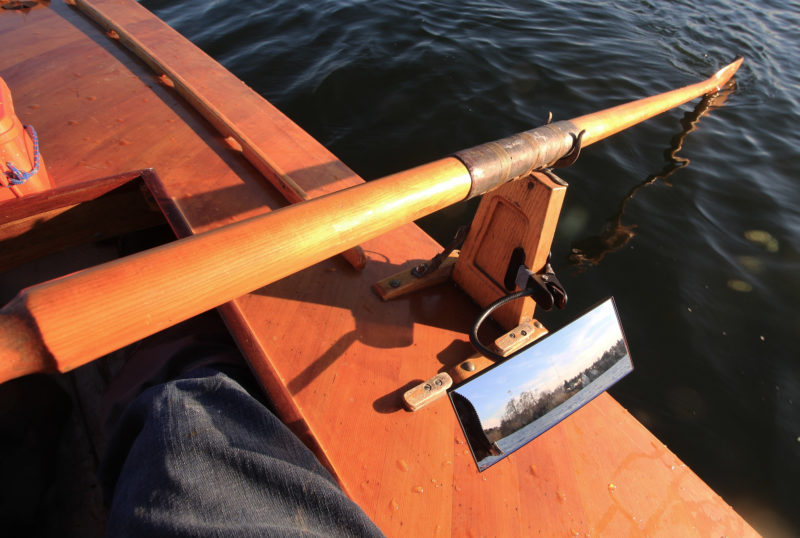
Finding I couldn’t see as well over the bow as I used to, I resorted to a mirror clipped to each oarlock stanchion.
I also mounted two wide-angle mirrors to help me see where I was headed. During my long voyage, I had never felt the need for mirrors on LUNA and felt pride in how far I could turn my head to look over the bow. My neck doesn’t provide the same range of motion now. To offer more shelter, I bought a $27 tent and cut a hole in its floor to fit around the cockpit coaming. There had been a few rainy nights on my cruise where I had just pulled the hatch over the cockpit, but I discovered in my recent backyard naps that I’d lost the tolerance for that.
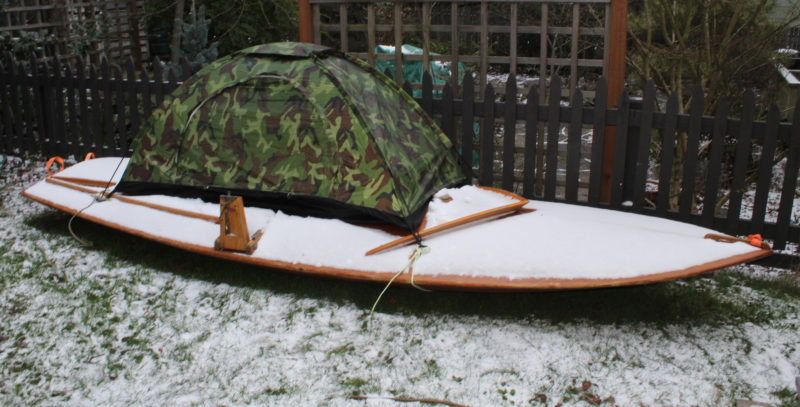
The night I’d planned to sleep aboard LUNA while in my back yard, I gave up before an early morning dusting of snow.
I chose a cold February night to sleep aboard LUNA in the back yard. I slipped a self-inflating sleeping pad in the bottom with one end tucked under the foredeck and the other butted against the footboard as I had during that winter cruise long ago. It took me a long time to get into the sleeping bag. Once in, I was able to lie on my left side, as I normally do, but I was far from comfortable. There wasn’t room to put one knee on top of the other, so I had to stagger them. I had plenty of room above me because of the tent, but I was facing the port side and felt boxed in. My chest tightened. This wasn’t going to work, and I couldn’t afford to spend a sleepless night with this trial. I clawed my way out of the sleeping bag and sat up in the cockpit. I tried to put my shoes on, but my feet seemed to be out of reach. My knees don’t bend as they used to, and it was made worse by the confines of the cockpit; I had to pull on a shin to get a foot close enough to put a shoe on. I retreated to my bedroom.
I hadn’t entirely given up on the idea of sleeping aboard LUNA and a few days later drove with her on the roof racks to a lake where I planned to spend a night. I lowered her to the cart and rolled her to the water’s edge. It was just a 150-yard row to the only island on the lake, a tree-crowned islet one-third the size of a football field.
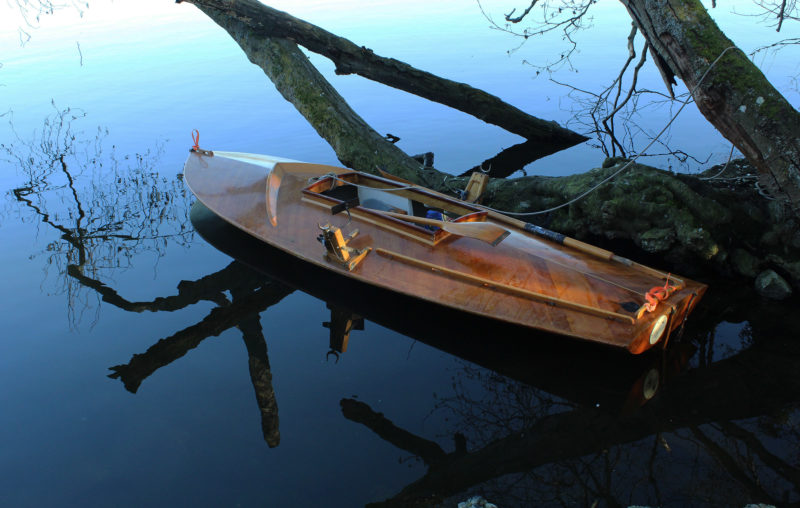
This little cove was where I had imagined spending a night aboard LUNA.
On the east side of the island, there is a cove just wide enough for LUNA’s oar span. Once there, I backed in and crawled aft across the deck just as the brass strip on her skeg ground against the rocks, bringing the boat to an abrupt stop.
I stepped ashore with the painter in hand. At the foot of the island’s knot of alder and maple trees the ground was bare; geese had eaten whatever ground cover there might have been and paved the island with a greasy black smear of poop. It didn’t invite walking across the island.
Returning to LUNA, I struggled to find solid footing and keep my balance. To keep her off the rocks I stepped into the water and waded out to her. The muddy bottom was every bit as slippery as the island and I lurched aboard. My momentum carried LUNA across the little cove into a web of overhanging branches that scraped across her deck like fingernails on a blackboard. She surely must have wondered who this lumbering oaf was who had dropped so heavily into the cockpit. I coiled the painter and pushed off the bottom with an oar until I was clear of the tangle.
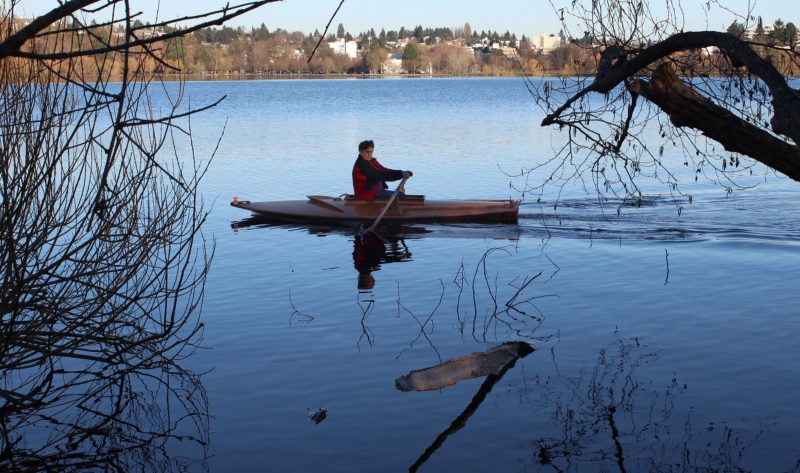
LUNA and I enjoyed each other’s company best while rowing together.
I rowed away from the island into the middle of the lake and sat with my hands resting on the oar handles. I had hoped that spending a night aboard LUNA would rekindle how I’d felt during that winter cruise 36 years ago. It was a voyage unburdened by purpose and free from the gravity of land—a voyage to a goal so distant that it lacked all urgency. There was just LUNA and me, together in each fleeting moment. My efforts to recapture that feeling weren’t being thwarted by LUNA. What I had more truly been trying to reconnect with was my youth, and I was only making myself painfully aware of my age. Nothing about LUNA had changed, but I was not at all the same person.
I felt the warmth of the afternoon sun on one side of my face and the chill of a feather-light breeze on the other. LUNA made music of the ripples lapping at her hull. When I took to the oars and rowed north, my breath grew deeper and stronger with the rhythm of rowing. I let the feathered blades skim across the water between strokes and felt the water as fully as if it were touching the backs of my hands. LUNA glided across the water with the hiss of water swept under the bow. She had awakened from her long slumber and surged ahead, leaving a champagne trail astern. I’d like to think she recognized me.![]()

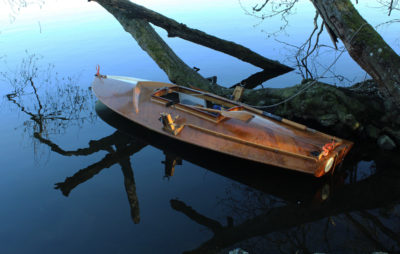
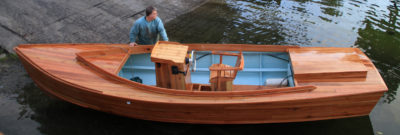
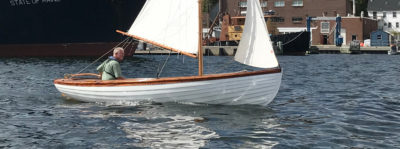
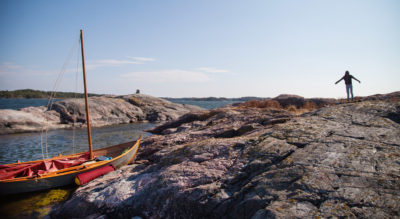
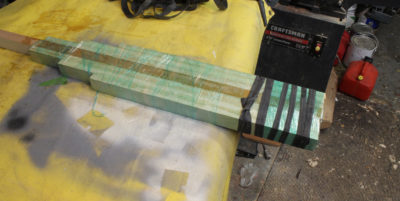
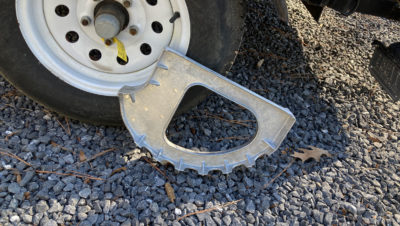
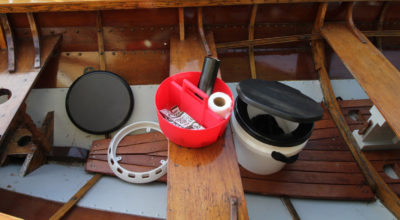
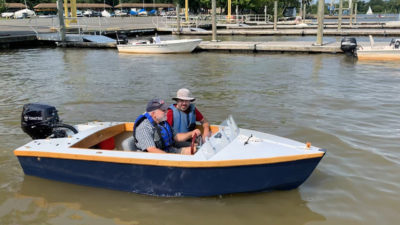


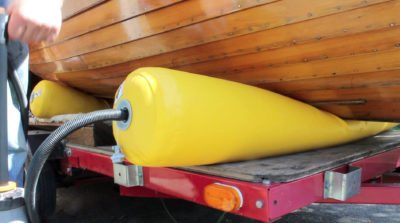

I’ve built several sneak boxes and thy are a lot of fun. I’d like to strip build one. Do you know of any plans. I think I remember your article.
The plans I used for my sneakbox came from Chapelle’s American Small Sailing Craft. The table of offsets is included in the drawing and one could easily make the molds and strip-plank the boat. The plans have the length at 12′ 2″; I stretched the mold spacing to get an LOA of 13′ 9″.
Skipper says when you were young you got to create those memories so that you can cherish them today, and LUNA was happy to help you refresh those memories. We’re sure that LUNA had just as good a time messing about with you in the 21st Century as she did in the last millennium.
Sympathy……..Mirrors, lumbering, etc…. Same here….. BUT….We never give up…. Our boats are too much of who we think we are….
Rod, There should be plans for sneakboxes in every size from the more traditional 12′ 6″ duckboat length right through to the 20′ racing sneakboxes at Independence Seaport in Philadelphia. There are a variety of hulls including some drawn by naval architects including Charles Mower, and others of almost equal skill. The museum should be able to provide a really complete set for a wonderful duckboat that I assisted Dave Dillion in documenting back in the 80s. There’s also a set of a Perrine or Beaton 15′ boat (the two most excellent builders of that class!) Finally, you should be able to find plans for an “improved” Sneakbox “Cruiser” in Rudder magazine.
Ideas on forward facing rowing would be helpful.
Read with a smile. Good commentary on enjoyment and age. I’ll bet you enjoyed writing the piece. That sort of comes with age. Thanks for sharing.
It’s a fortune to have good memories of that epic journey down the Mississippi so many years ago in your home-built wooden sneakbox.
And it’s good that you did not sell it, so you can use it any time you like.
Sleeping on board of an open boat is getting harder with age!
On my Harrier, the floor is just wide enough for sleeping for two on self-inflating foam pads right on the red-cedar boards.
Anyway, I always remember that song of Charles Aznavour, “Yesterday, When I Was Young.”
What a lovely tale! I hope that you and LUNA will have many more happy voyages, even if they are just short jaunts across the lake.
I just read this for the first time. What a treat. Thank you